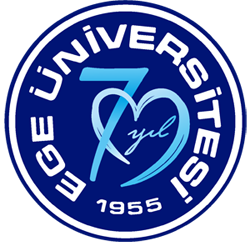Robotic Surgery
WHAT IS ROBOTIC SURGERY?
In robotic surgery, the surgeon performs the surgery from the surgeon's console next to the patient in the operating room, using the arms modeled on the wrist on the patient's console.
Robotic surgery, which has entered the world of surgery as a very exciting concept and has been actively used in Turkey for 10 years, is a method that is applied on the basis of minimally invasive laparoscopic surgery.
The da Vinci robot, which is the only example of robotic surgery systems in the world, consists of 3 main parts: surgeon console, patient console and display tower. In laparoscopic surgery, on the other hand, the surgeon and assistant use the instruments at the bedside.
"Robotic surgery", which provides recovery in a much shorter time compared to open surgery, is applied in many fields of medicine, especially in Urology, Gynecology, General Surgery, Ear Nose and Throat, Cardiovascular Surgery, Thoracic Surgery and Pediatric Surgery. Since the instruments used in Robotic Surgery can rotate 540 degrees, have wrist movements, and are much smaller than the human hand, the surgeon can easily reach and intervene in areas that cannot be reached by his hand. Thanks to the real image obtained in three dimensions and 16 times magnification, it is easy to clean the entire tumor, especially in cancer patients, and at the same time, the applicability of the surgery can be facilitated due to less bleeding. In addition, due to the closed method of the surgery, fewer incisions are made and it provides a cosmetic advantage to the patients with less scarring. Since each of the incisions made are smaller than 1 cm (8 mm), the patient recovers in a much shorter time and returns to his social life in a short time. Since it is minimally invasive, the risk of infection is also significantly reduced.
WHAT IS THE HISTORY OF da Vinci ROBOTIC SURGERY SYSTEMS?
da Vinci® is the world's first and only robotic surgery system.
The da Vinci® Robotic Surgery System was originally developed by NASA for use by astronauts in space when they need healthcare. Thus, astronauts would be able to operate remotely using the surgeon's console in the world. The da Vinci® Robotic Surgery System was developed by researchers working at the NASA Research Center, engineers doing scientific research on the virtual reality system, and robotic technologists working at the Stanford University Research Center in California, United States. In 2000, with the approval of the American Food and Drug Administration (FDA), it was first used in Cardiovascular surgery, then widely in the fields of urology, general surgery, gynecology, general surgery, ENT.
DOES A ROBOT DO THE SURGERY?
No way! The concept of 'robot' has always appealed to people. When robotic surgery is mentioned, the first question that comes to mind is "Does a robot perform the surgery?" We can easily say "no" to this question. It's not a robot that does the surgery, it's still a surgeon. In robotic surgery, the surgeon commands the robot, and the arms on the patient console perform the operation by simultaneously reflecting all the commands received from the surgeon.
The most important difference is that the surgeon can see the operating area much more clearly and closely, in 3D, thanks to the capabilities of the robot, he gets less tired because he works sitting down, and can use many similar advantages.
WHY CHOOSE ROBOTIC SURGERY?
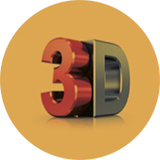 |
THREE-DIMENSIONAL (3D-HD) IMAGE |
 |
ADVANCED MOBILITY The instruments at the ends of the arms of robotic surgery can rotate 180 degrees in all directions, similar to the human wrist. These tools can also bend far beyond the range of motion of the human wrist and rotate up to 540 degrees. In this way, it reaches many parts of the body (especially in narrow and small areas) and provides important conveniences such as cutting, holding and suturing in critical surgical interventions. |
 |
ELIMINATE HANDS (Tremor Filtration Feature) The human hand may tremble more or less physiologically; however, the precision movement ability of the robotic surgery arms eliminates this tremor. In this way, human-related errors in interventions to be made in risky areas can be greatly reduced. |
 |
PHYSICAL CONDITIONS OF THE SURGERY DURING THE SURGERY Surgeons are usually standing during the surgery, which can make it difficult to stand due to fatigue during prolonged surgical interventions. In robotic surgery, the surgeon manages the operation from the console in a sitting position. Meanwhile, while the stress due to physical fatigue decreases, the concentration of the surgeon increases. |
 |
MINIMUM BLOOD LOSS Thanks to the small incisions in the robotic surgery system and the enlargement of even the smallest vein with a 3D image, blood loss is greatly reduced. Some operations may not even require a blood transfusion. Thanks to incisions smaller than 1 centimeter, these operations reduce the pain that can be experienced after the surgery to a great extent. |
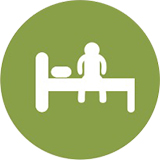 |
QUICK RETURN TO DAILY LIFE AFTER SURGERY One of the opportunities provided by the surgeries performed with robotic surgery is the shortening of the patients' stay in the hospital and their transition to daily life. In this way, the robotic surgery system provides the opportunity to start these treatments earlier in patients who need chemotherapy or radiotherapy. |
.jpg) |
SURGERY OF OBESITY PATIENTS WITH ROBOTIC SURGERY SYSTEM Having a lot of fatty tissue in obesity patients can make surgeries very difficult. Robotic surgery system; It is widely used in many fields of medicine from urology to cardiology, gynecology to general surgery, and many different operations are easily performed even in morbidly obese patients. |
 |
IMPROVEMENT IN PHYSICAL CONDITIONS The fact that the surgeon manages the surgery while sitting in front of the console reduces the stress due to physical fatigue and increases concentration. This factor gains great importance especially in long-term surgeries. |
WHAT ARE THE BENEFITS OF ROBOTIC SURGERY TO THE PATIENT?
• Fewer incisions
• Less blood loss
• Less pain
• Faster recovery
• Less scarring, better cosmetic results
• Quicker return to current life
• Less need for blood transfusions
• Less risk of infection
• Less complication rate
BRANCHES USING ROBOTIC SURGERY:
 |
UROLOGY Urology is one of the most widely used areas of the da Vinci® Robotic Surgery System. As in different countries of the world, in Turkey, especially radical prostatectomy (removal of the prostate), kidney tumors, opening of stenosis in the kidney canal, bladder tumors and many other operations are performed with the da Vinci® Robotic Surgery System. |
|
CARDIAC SURGERY The da Vinci® Robotic Surgery System is used for mitral valve repair, coronary by-pass surgery (especially the change of veins on the anterior surface), rhythm disorders, mitral valve replacement, hole repair, right and left atrium problems. |
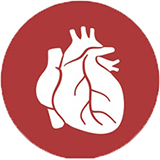 |
 |
GENERAL SURGERY The da Vinci® Robotic Surgery System can be used in the surgical treatment of many colorectal diseases, especially colon and rectum cancers, diverticulum, inflammatory bowel diseases. da Vinci® surgery also ensures the protection of the nerves located near the operation area, especially in colon and rectal surgery. |
|
OBESITY SURGERY The wide and thick layer of fat in obesity patients not only limits the surgeon's ability to intervene, but also makes it difficult to perform the planned intervention. This problem disappears in surgeries performed with the da Vinci® Robotic Surgery System. Gastric by-pass surgeries, which are considered the gold standard in bariatric surgery, come first among bariatric surgeries performed with the da Vinci® Robotic Surgery System. This method allows both the reduction of the stomach and the deactivation of a part of the intestines, reducing the absorption of the food taken. |
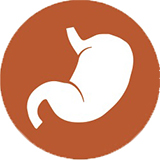 |
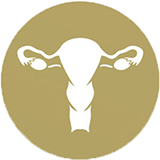 |
GYNECOLOGY With the da Vinci® Robotic Surgery System, cancer surgeries, removal of the uterus, removal of large-diameter fibroids, suspending vagina or uterus, and tube surgery can be performed successfully. |
|
OTOLARYNGOLOGY The da Vinci® Robotic Surgery System is also used with success in the fields of ear-nose-throat and head-neck surgery. The method, defined as Transoral Robotic Surgery, allows the removal of benign or malignant tumors of the mouth, larynx, tongue and tonsils. With the Robotic Surgery System, surgeries can be performed with the two arms of the system using the mouth, which is the natural entrance site, without making any incisions. This technique, which creates less trauma for patients compared to open surgery, provides surgeons with the opportunity to work more safely in a sensitive and narrow area where many nerves and vessels are located. |
 |
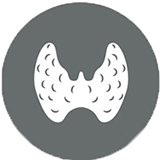 |
THYROID SURGERY In thyroid gland operations on both sides of the trachea, the formation of scars on the neck can be aesthetically disturbing. With the da Vinci® Robotic Surgery System, it is possible to perform all thyroid surgeries in patients with suitable body mass index, except for reaching the thyroid in the neck by entering under the armpit and removing very large goiters. Patients who underwent surgery with the da Vinci® Robotic Surgery System can return to their homes after 24 hours and take a bath on the same day. Except for a hidden incision in the armpit of these patients, no scars are formed. |
|
LUNG(Thoracic)SURGERY In da Vinci® Robotic Surgery System thoracic surgery, practical operations of a whole lung (pnomonectomy), a lobe (lobectomy) or a segment (segmentectomy), which is defined as anatomical lung resection, are performed today. In addition, robotic surgery is used for esophageal surgeries and for masses and cysts in the middle of both lungs, defined as the mediastinum. If patients will receive radiotherapy or chemotherapy treatments, these treatments can be started quickly because the recovery time is much shorter. |
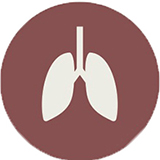 |
 |
PEDIATRIC SURGERY The da Vinci® Robotic Surgery System is also used very successfully in pediatric cases, and thanks to the very small diameter of the instruments used, it is possible to move easily within the patient's body. Healing of incisions smaller than 1 cm compared to large incisions in open surgery also ensures rapid recovery and return to normal life in pediatric patients. |
|
Ege University Medical Faculty Hospital Robotic Surgery Applications in the Press |
Ege University Medical Faculty Hospital Robotic Surgery Achievements in the Press |

